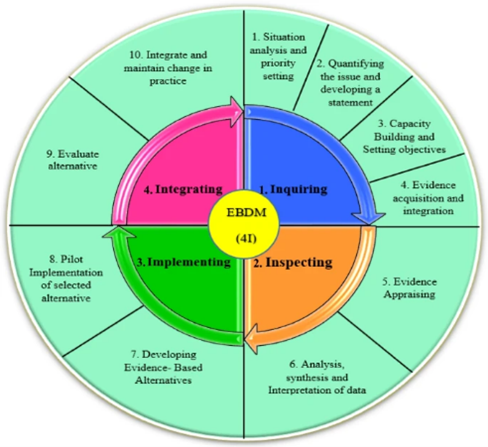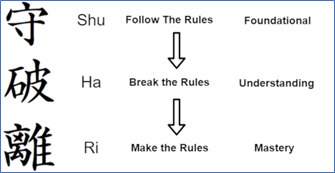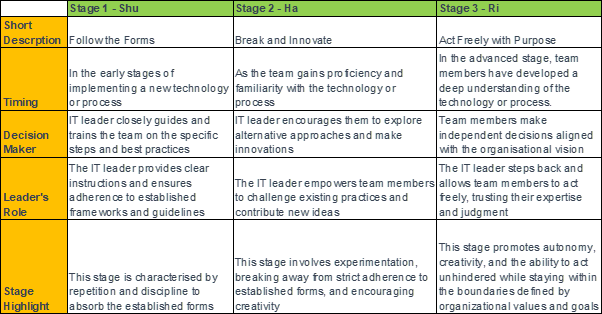BREATHE Your Way Through Conflict
Conflict in and of itself is not bad. It can drive innovative solutions as organizations tackle tough, challenging, and complex problems. While some conflict is healthy, too much is not. Conflict, if not managed correctly, can quickly spiral from something healthy, to something toxic resulting in destroyed relationships. How we manage conflict matters, in leadership, business, or at home.[1]
Conflict management is a skill everyone needs in their kit bag. When dealing with emotionally charged topics, one should have the courage to communicate their way through conflict. Confrontational situations may require one to take a moment to breathe.[2] While physical breathing techniques to remain calm during conflict are helpful, BREATHE is a conflict management framework one can use to navigate their way to achieve productive results. BREATHE stands for:
- Be aware of the situation; and with whom one is in conflict.
- Reflect, then respond. Do not react.
- Exercise emotional intelligence and empathy.
- Actively listen, ask clarifying questions, and acknowledge.
- T Think of others first.
- Humble yourself.
- Execute and evaluate the results.
This BREATHE framework can serve as a cyclical, sequential and nonlinear tool, with interconnecting components. One can initiate the framework at any point and execute multiple elements simultaneously. For example, empathy may open the door to active listening and acknowledgement, which may activate one’s humility, allowing one to think about others first and engage in teamwork. Moreover, while each component can serve as its own independent conflict management device, the comprehensive employment of all elements working together may prove most effective in producing optimal outcomes.
Be Aware.
Be situationally aware. Understand the factors contributing to the conflict. A tool to help one become situationally aware is to conduct an environmental assessment. When conducting an environmental assessment, consider the following external and internal factors. Externally, analyze the political and economic situation. Determine whether one is dealing with social or cultural issues, or labor market challenges. Evaluate technological capabilities.[3] Internally, various friction points could contribute to conflict, such as production problems; lack of assets and resources; and ineffective policies.[4] At the individual relational level, environmental contributors could include work life stressors, health concerns, personal finances, and or relationship issues. Finally, something to keep in mind. One or all contributing factors could exist simultaneously, affecting one or all parties.
The external and internal environment is complex and complicated enough without introducing the volatility of the human dynamic. However, one must understand with whom one is in conflict. Maintaining positive relationships is critical to achieving desired outcomes because it involves trust. Positive relationships build trust, contribute to esprit de corps within an organization, and enable one to achieve their objectives with the help of willing participants. The goal of the BREATHE framework is to help the implementor move the needle from a negative relationship to a positive one, from conflict to collaboration.[5]
To help one maintain positive relationships, a stakeholder analysis may be helpful.[6] The intent of conducting a stakeholder analysis is to decide with whom you should engage, how you need to engage them, and when. You are trying to determine: 1) Is the conflict worth your time and effort? 2) Is the stakeholder of such influence you should care? Given the gravity of the situational context, and the relational importance of the stakeholders with whom one is in conflict, how we respond is an essential element of ensuring a positive outcome. This leads to the next stage of the BREATHE framework, reflect, then respond.
Reflect, then respond. Do not react.
Instead of impulsive reactions typical of conflict, take time to reflect, then respond. The difference between reacting versus responding, is analogous to instinct and thought. Instincts are primal behaviors below the conscious level responding to environmental stimuli without reason. Thought on the other hand, is a developed plan based on the intellectual product, views, and principles of a group or individual.[7]
Another difference between reaction and response is the potential impact. Depending on the severity, reacting without thinking can lead to potentially negative unintended consequences. Conversely, reflecting, and then responding can lead to planned outcomes. The BREATHE framework is a methodology requiring reflection through each phase, resulting in a deliberate and intentional response. Reflecting, then responding, is the gateway to the next phase of the BREATHE framework, exercising emotional intelligence and empathy.
Exercise emotional intelligence and empathy.
Responding instead of reacting is an exercise of controlling one’s emotions. Therefore, while in the moment, we should understand what we are feeling, why we are feeling that way, and what can we do about it. Meaning, we should exercise emotional intelligence (EI). EI “is the ability to identify, assess, and manage the personal emotions of oneself and other people….”.[8] The exercise of identifying, assessing, and managing one’s feelings can serve as a calming technique in and of itself. Additionally, deliberately mapping out the BREATHE framework may help influence one’s emotions to a less aggressive state. The last step of EI is to repeat the process but from the perspective of the person or group with whom you are in conflict. This leads to exercising empathy.
Empathy is “the ability to understand and share other people’s feelings”, [9] enabling one to “see others as they see themselves”.[10] As you think through your assumptions regarding the other party, try to think through how the other party may feel if your assumptions about them were true. Try to place yourself in the other party’s shoes. Ask and answer, “How would I feel if I were (insert other party)?” After completing this exercise, the next step is to turn your assumptions into facts through fact-finding techniques. The most effective fact-finding technique is face-to-face communication.[11] This leads to the next phase of the BREATHE framework, actively listen, ask clarifying questions, and acknowledge the other party or parties.
Advertisement
[widget id=”custom_html-68″]
Actively listen, ask clarifying questions, and acknowledge.
Communication is a widespread problem in every organization, as well as in relationships. Therefore, effective communication skills are essential. An essential element of effective communication is active listening. Active listening is the ability to apply one’s undivided attention to the speaker, taking in not only the words spoken, but the tone and mannerisms as well. It is the ability to hear and see past emotions to understand what the speaker is trying to communicate. One who is actively listening, hears the message, understands it, signals their understanding with appropriate body language and gestures, reflects on it, then communicates their understanding by repeating the message to the sender, followed by an appropriate interpretation.[12]
When engaging in conflict management, ask clarifying questions. Asking clarifying questions deepens one’s connection with the other party. It helps each party further understand and empathize with each other’s perspective. Asking why questions, such as, “Why did you”, may spark defensiveness. Instead, use the “What? So what? Which means? Therefore?” Technique, which is useful in turning data into actionable information.
The “what” statement acknowledges the transmission of data between sender and receiver. For example, “What I hear you saying is….” The “so what” communicates the importance of the data. It may sound like, “So this is important to me because….” The “which means” statement translates data (what and so what) into useful information, which may potentially affect the individual receiving it. Finally, the “therefore” statement translates the information into potential decisions one may take in response to the information received.
The “What? So What? Which Means? Therefore?” technique increases communication between the sender and receiver by confirming the receiver received and understood the sender’s message and knows what to do with the information. When communicating through conflict, each party wants the opportunity to voice their opinion and be heard. This technique ensures that opportunity by acknowledging the communique.
For clarity, acknowledgement is different from agreement. One does not have to agree with the other party to acknowledge what they are saying. Acknowledgement is a way to extend dignity and respect to the other party. It signals one values and understands what the other is saying. With understanding, the conflicting parties can work through the issues together to achieve amicable resolution. With shared understanding, conflicting parties can attack the problems instead of each other. This leads to the next phase of the BREATHE framework, teamwork and think of others first.
Teamwork. Think others first.
Conflicting parties should work through issues together as a team. Their goal should be to reach amicable solutions based on mutual interests. Suggestions for setting a positive atmosphere of trust and collaboration may start with eliminating counterproductive behaviors such as stigma and biases. These behaviors tend to isolate and divide rather than unify. To mitigate these behaviors, one should embrace the differences between parties, be culturally competent, and establish an atmosphere of psychological safety to build trust and teamwork.[13]
While cultural diversity typically applies to different ethnic groups, one can apply cultural diversity in other contexts as well.[14] For example, within professions, there are distinct institutional cultures. Within these cultures, there are dimensions distinguishing one culture from another, driven by the output each profession produces. These differences drive how each profession deals with such topics such as power, risk, autonomy, teamwork, and operational versus strategic orientation.[15] Further, each profession has its own distinctive language, to include, subtext associated with subspecialties or special skill identifiers. They each have a preferred way of communicating, whether a common core language or terminology, direct or indirect communication methods, or adjusting tone and volume.[16]
To effectively communicate with diverse groups, one should display a measure of cultural competence. One demonstrates cultural competence by communicating and behaving in ways that demonstrates knowledge and understanding of diverse groups. By going out of one’s way to demonstrate cultural competence, one begins to set the atmosphere for psychological safety, which enhances teamwork while reducing conflict.[17]
Psychological safety is a teamwork enabler. It sets conditions for collaboration. Psychological safety is when one feels comfortable in their environment because they believe the group in which they belong will not discard or embarrass them, regardless of circumstance. In this environment, people are free to share their relevant opinions. Once there is an atmosphere of safety, collaborative learning begins to take place.[18]
As part of establishing and maintaining teamwork, teammates should think of others first.[19] To help one think of others first, consider three key factors. First, the importance of being a steward by placing the needs of stakeholders first to build and maintain trust.[20] Second, exercise an emotive approach by focusing on the individual, trying to satisfy their individual needs while accomplishing one’s goals and objectives.[21] Third, as able, meeting reasonable accommodations.[22] While reasonable accommodation is traditionally a term used to accommodate those with physical or mental limitations, one can use it to negotiate one’s way through conflict. The objective of any negotiation is to achieve mutually beneficial outcomes. Thinking of others first while navigating and negotiating one’s way through conflict can assist in achieving this goal. Effectively managing conflict through teamwork, requires a measure of humility, which is the next phase of the BREATHE framework.
Humble yourself.
Thinking through problems as a team, and thinking of others first, requires humility. It takes humility to admit, “Hey, we are struggling in this area, and we need help solving this problem.” It takes humility to remain silent and listen while fellow teammates share their opinions and ideas during open dialogue. It takes humility to keep an open mind while listening to creative solutions aimed at solving complex problems. One must remain humble enough to admit when someone else has a better idea and be willing to support the idea with proper effort.
Leaders must remain humble enough to allow their fellow teammates to speak truth to power when trying to attack and solve organizational wide issues. These leaders display humility by underwriting risks associated with recommended actions, while leveraging adequate staffing, equipment, and resources necessary to ensure the plan’s success. This leads us to the final step of the BREATHE framework, execute and evaluate.
Execute and evaluate.
After working through the problem as a team, it is time to execute the plan and evaluate the results.[23] Here we are talking about measures of performance and measures of effectiveness, with measure of effectiveness being the most important, as it deals with results and desired outcomes. Measures of effectiveness answers the question of did we achieve the desired effect? Conversely, measure of performance has to do with efficiency. It answers the question of did we do what we said we would, and can we do it better? Bottom line, we are talking about quality, the “perceived degree of excellence”.[24]
We measure quality in terms of outcomes and improvement using evidence-based methodologies. Quality and its associated outcomes start with evidence-based management, which is a method of incorporating performance measurements, best practices, as well as systems and processes to achieve desirable outcomes.[25] Outcomes are the results of something.[26] Meaning, in any endeavor, results matter. However, how we achieve those results matter as well. The right way to achieve desired outcomes is through quality planning and use of evidence-based approaches and continuous quality improvement.[27]
Conclusion.
Conflict in relationships is unavoidable. It is not a matter of if, but when. Therefore, how you deal with conflict matters, as it will impact the results achieved. You can avoid it, or deal with it counterproductively, inevitably degrading trust and perpetuating conflict. Or you can manage it using more productive methods. The BREATHE framework offers “a way” of navigating the potential messiness associated with complicated and complex relationships. The framework encourages awareness of one’s environment, and each other. It intentionally attempts to get its users to slow down and think through their next steps. It encourages self-awareness and shared understanding. It advocates for teamwork through humility. Finally, it is result oriented. While the BREATHE framework does not guarantee a relationship free of friction, it can provide a life raft when sailing its turbulent waters.







